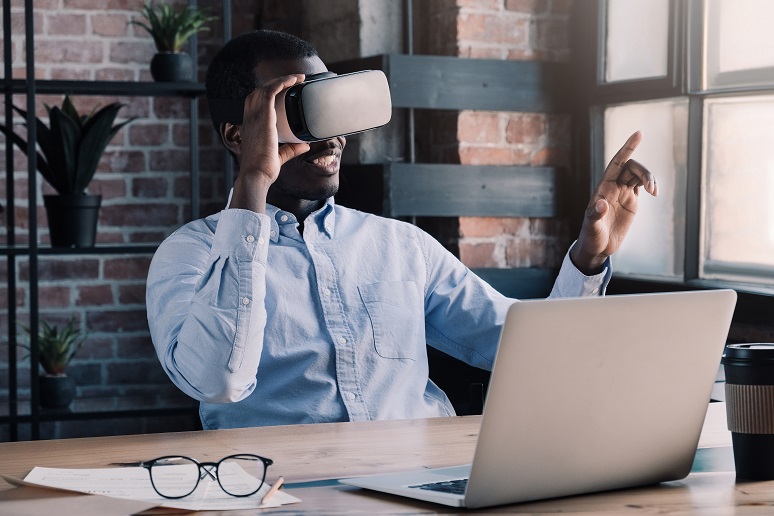It’s still early enough in the new year to be talking about what’s ahead for 2024, and while I’ve already done my share of crystal ball prognosticating, this time around, it will be from a more broad-based perspective. Aside from covering the ever-changing worlds of collaboration and contact center, I closely follow broader trends around future of work (FOW).
Examining the future of work demonstrates which technologies are going to have the most impact for enterprises. With technology evolving so quickly, a common FOW theme is that the “future” is here now, so decision-makers cannot afford to take a wait-and-see approach. To illustrate, here are three themes I’ve been seeing that should be top of mind for No Jitter readers.
Cybersecurity Is Core to FOW
Cybersecurity – and IT security in general – is a perennial theme in tech, but its role keeps expanding as digital transformation advances. Not that long ago, the focus was mostly on physical security, and protecting networks, which were then largely hardware-based. There were far fewer threats, most were known and could be reasonably contained.
As the world has become digitized, and as we’ve shifted from hardware to software and then to cloud, the realm of network security has become eclipsed by the more insidious world of cybersecurity. The number and variety of threats has become exponentially larger, and the practitioners – bad actors – have become more brazen and destructive. When hospitals and libraries start becoming targets, everyone is vulnerable, making cybersecurity a top business priority.
None of this is really new, but with AI’s rapid ascendancy, the stakes are even higher now. Hybrid work has also brought new challenges in terms of managing and protecting data with distributed workforces. While hybrid work has more to do with maintaining a safe network environment, AI adds complexity in terms of the nature of cybersecurity risks.
Keeping corporate data secure is one thing, but AI is making threats around identity and privacy more real. Cybercriminals only need a few snippets of audio or images from just about anywhere to create deepfakes for stealing data, ransomware, tarnishing your brand, etc. Keeping our identities safe and protecting personal privacy is getting much harder, and AI tools are evolving faster than we’re able to keep up with. The cybersecurity landscape should be integral to how you’re thinking about FOW, and a key priority for 2024 should be getting a better understanding of all these threats now – it’s a different world than even just two years ago.
Immersive Workplace Experiences Are Coming
The pandemic gave rise to virtual collaboration, but the likes of Teams, Zoom and Webex for video meetings are a far cry from the world of AR/VR/MR that gamers have been living in for years. Immersive platforms have been around for quite some time, and I have long maintained that Second Life and Avaya’s web.alive were just ten years too early.
There are many reasons why these technologies have not gained traction in the workplace, but there’s good reason to believe that’s poised to change now. Both Tom Brannen and myself have written about this recently here and here in No Jitter, and in short, two trends are aligning that I believe make this inevitable. First is the technology itself, not just for how existing platforms have been evolving, but also for the sudden impact AI is having with new capabilities that make virtual experiences so much more, well, immersive.
Pair that with demographic shifts, especially as digital natives come to dominate the workforce. Not only have they grown up with gaming, but their generation has been developing the technologies. As their ranks grow in the workforce, it’s getting easier to envision use cases for collaboration that will feel comfortable. Not only will the idea of immersive work settings become more normalized, but participation will become much easier with PC and mobile options that do not require headsets.
This is where the Big Tech vendors come into play, namely Microsoft, Apple and Meta, as the enterprise is a major growth vector for all of them. For now, immersive workspaces may still be a world of legless avatars, but once these companies start making a serious push, that world will get a lot more interesting. These vendors all see how the above two trends are aligning, and there should be little doubt this will be a driver for FOW.
Making Work Both Human-centric and Machine-centric
With everything seemingly about AI now, it’s easy to overlook that at the heart of any workplace, we are still people, and we’ve managed for thousands of years without it. For years, every business has been a technology business, and it won’t be long before they all become AI businesses. It’s easy to just say that’s the march of progress in the age of science, and at face value, there’s nothing wrong with that.
However, in 2023, we got some jarring glimpses of what that world could look like with unchecked progress. AI-for-good may be our natural aspiration, but the definition of “good” may well become the domain of Big Tech, where automation and cost reduction are likely the end game. Google’s famous “don’t be evil” mantra now seems quaint, and in fact was changed to “do the right thing” when it became Alphabet in 2018. I’m not trying to paint Big Tech into a corner here, rather to note that with the AI genie now out of the bottle, we must not lose sight of the need for AI to be in the service of humans, and not the other way around.
This speaks to some fundamental challenges about the future of work. As we become ever-dependent on technology – which has already happened – it’s not a big stretch to see the same thing happen with AI, at which point it’s very hard to go back to a human-centric workplace. The bots are coming, and immersive workspaces won’t be far behind. There’s a lot to like about a machine-centric world of work – until you’re replaced by a bot or a digital twin.
Balancing a human-centric and machine-centric workplace is going to become an existential issue for enterprises, as AI becomes more prevalent and workers lag in developing the skills needed for FOW. It’s more than a technology conversation, and as work functions become more automated, we have to make sure we don’t lose the elements that make us human and make businesses successful. Can you really trust AI for decision-making, creativity, mentoring, team-building, etc.? Maybe that day will come, but the future of work very much needs to be about finding – and keeping – that balance.









